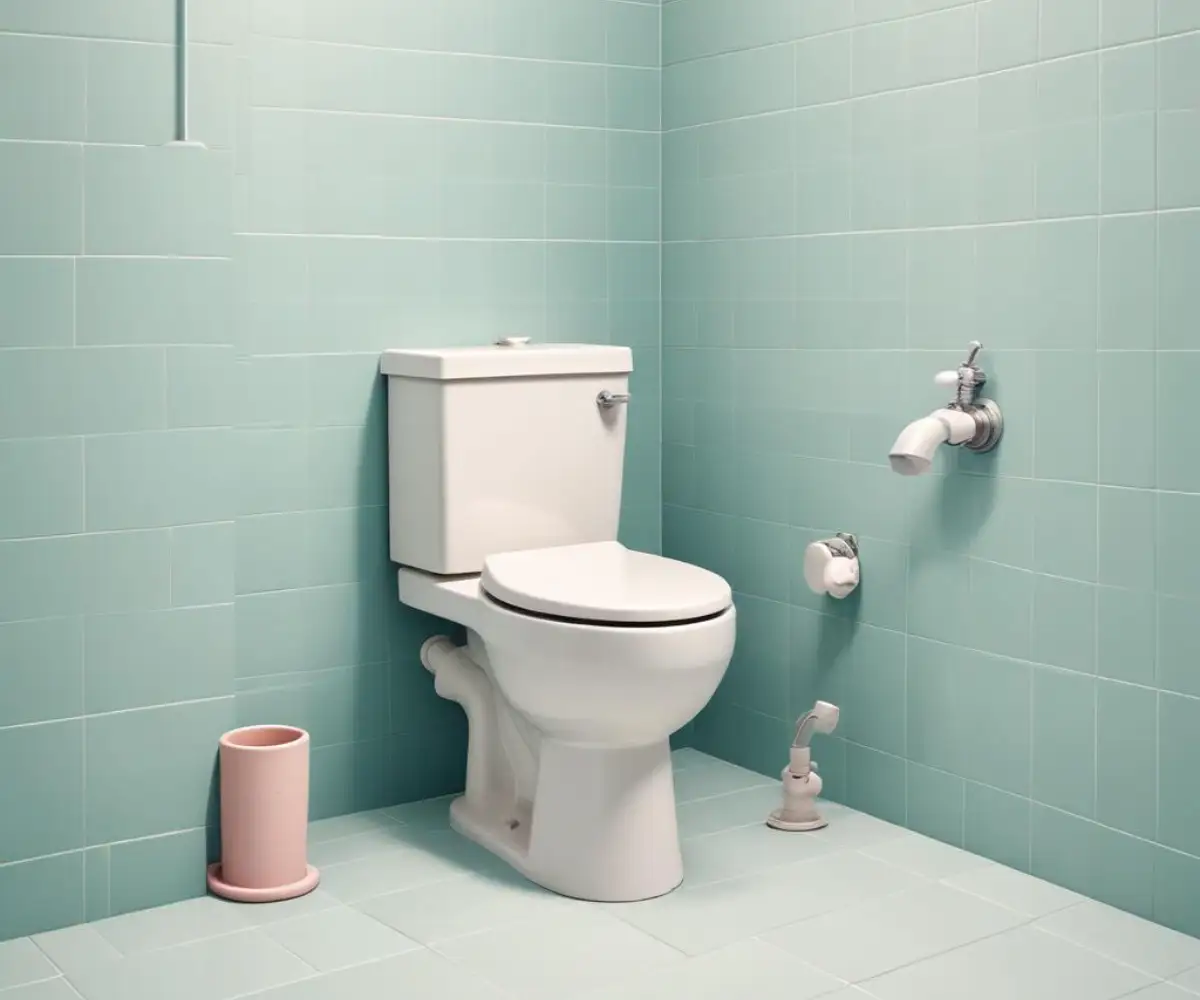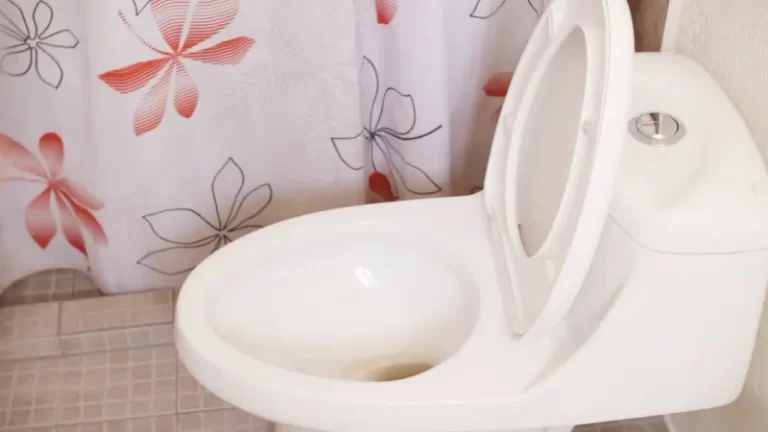Cost to Relocate Toilet: The Real Price Tag No One Tells You
You have a vision for your perfect bathroom. It’s spacious, logical, and the layout just works. But there’s one major obstacle standing in your way: the toilet is in the completely wrong spot.
Relocating a toilet seems like a straightforward task, but it’s one of the most deceptively complex and costly bathroom renovation projects. The final bill can swing from a few hundred to many thousands of dollars, leaving homeowners in shock.
Understanding the “why” behind this massive price variation is the key to budgeting accurately and avoiding costly surprises. This guide breaks down every factor, from plumbing to flooring, to reveal the true cost of moving your toilet.
You'll Learn About
Why the Cost to Move a Toilet Varies So Wildly
The primary reason for the wide cost range is simple: moving a toilet is not about the fixture itself. It’s about relocating the heavy-duty plumbing infrastructure hidden beneath your floor and behind your walls.
The main components are the large 3 or 4-inch drainpipe, which carries waste away, and the vent pipe, which allows air into the system to ensure proper drainage and prevent sewer gases from entering your home.
The #1 Factor: Your Home’s Foundation
The single biggest variable dictating the cost and difficulty of your project is what your house is built on. Accessing the main drainpipe is either relatively simple or a major construction project.
Moving a toilet on a concrete slab foundation is the most expensive scenario. The process involves breaking up the concrete with a jackhammer, trenching a new path for the drainpipe, laying the new pipe, and then re-pouring the concrete. This is a labor-intensive, dusty, and loud process that significantly increases costs.
Conversely, if your home has a basement or a crawlspace, the project becomes much more manageable. Plumbers can access the drainpipes from below, making it significantly easier to cut into the existing line and run a new pipe to the desired location. This direct access drastically reduces labor time and complexity.
The Journey of the Drainpipe
The distance you plan to move the toilet is the next critical factor. A small adjustment is vastly different from moving it to an entirely new wall.
A crucial and non-negotiable aspect of this work is the drainpipe’s slope. For waste to flow correctly to the main sewer line, the pipe must have a downward slope of at least 1/4 inch for every foot of pipe. Getting this wrong guarantees future clogs and plumbing nightmares.
If you’re only moving the toilet a few inches, a plumber might be able to use an offset toilet flange. This special fitting can shift the toilet’s position slightly without requiring major pipe rerouting. However, a move across the room requires cutting into the subfloor, rerouting the drainpipe, and ensuring the proper slope is maintained over a longer distance.
Detailed Cost Breakdown: From Plumbers to Permits
Budgeting for a toilet relocation requires looking beyond just the plumbing. You must account for labor, materials, and the finishing work required to put your bathroom back together.
A project of this scale can sometimes uncover other issues. During demolition, you might find a problem with a hidden GFCI outlet that needs correcting or even trace the source of that strange chirping noise in the house that wasn’t a smoke detector to a plumbing vent issue.

Here is a table outlining the potential expenses you may encounter during the project. These figures are estimates and can vary significantly based on your location and the specific requirements of your home.
| Expense Item | Average Cost Range | Notes |
|---|---|---|
| Plumber Labor | $400 – $2,000+ | This is the core cost. Varies based on foundation type and complexity. |
| Materials (Pipes, Fittings) | $50 – $200 | Includes PVC or ABS pipes, connectors, wax ring, and flange. |
| New Toilet | $150 – $600 | Cost of the new fixture itself, if you’re upgrading. |
| Permits | $75 – $250 | Often required by local municipalities for altering drainage systems. |
| Concrete Work (Slab Only) | $500 – $1,500+ | Includes breaking, trenching, and re-pouring concrete. |
| Subfloor Repair | $100 – $400 | Repairing the wood subfloor after cutting for the new pipe. |
| Flooring Repair/Replacement | $200 – $1,000+ | Cost to patch or replace tile, vinyl, or other flooring. |
| Drywall Repair & Painting | $250 – $750 | For patching walls or ceilings that were opened to access plumbing vents. |
The “Hidden” Costs of Finishing
The plumber’s job is often just the first phase. The most frequently underestimated expenses are related to the “finish” work. Moving the toilet will leave a hole in your floor where the old drain was.
Unless you have spare matching tiles or flooring from the original installation, you will likely need to patch the area or, in many cases, replace the entire bathroom floor for a seamless look. The same applies to drywall if the plumber had to open up walls to access the vent stack.
DIY vs. Hiring a Pro: A Cost-Benefit Analysis
The idea of saving over a thousand dollars in labor costs can make a DIY toilet relocation seem very appealing. However, this is one of the riskiest home improvement projects to undertake without professional knowledge.
The Dangers of a DIY Approach
The margin for error is incredibly small and the consequences are severe. An improperly sloped drain line will lead to constant clogs. A poorly sealed wax ring or drain connection will cause slow leaks, leading to catastrophic water damage, mold, and rot in your subfloor.
Furthermore, incorrect venting can allow dangerous sewer gases into your home. This is not just a matter of unpleasant odors; it’s a serious health hazard. Failing a home inspection due to unpermitted or incorrect plumbing work can also complicate a future sale of your property.
When to Absolutely Call a Professional
You must hire a licensed plumber for any toilet relocation that involves moving the drainpipe. Their expertise ensures the job is done correctly, meets all local building codes, and protects your home’s value and your family’s safety.
A professional will secure the necessary permits, understand the complex requirements for drainage and venting, and be insured against accidental damage. The peace of mind that comes from a properly executed job is worth every penny of the labor cost.
Beyond the Basics: Advanced Considerations
Thinking about a toilet relocation solely in terms of cost misses part of the bigger picture. The final result impacts your daily life and your home’s overall value.
Ergonomics and Long-Term Value
A bathroom with a poor layout is a daily annoyance. Perhaps the toilet is crammed against the vanity, or the door swings open into it. Correcting this isn’t just an expense; it’s an investment in your home’s functionality.
A well-designed bathroom with a logical, spacious layout is a major selling point for potential buyers. While you may not recoup the entire cost of the renovation, an awkward bathroom can be a significant deterrent. Framing the project as an upgrade to your home’s usability and marketability can help justify the upfront cost.
Understanding Venting: The Unseen Necessity
Every plumbing fixture in your home, including the toilet, must be connected to a vent system. This system allows air to flow into the pipes as water flows out, preventing a vacuum effect that would stop drainage. It also safely channels sewer gases up and out through a pipe on your roof.
Moving a toilet often means the new location is too far from the existing vent. This requires running a new vent pipe through the walls and connecting it to the main vent stack. This adds another layer of complexity and cost that homeowners rarely consider at the outset.
Step-by-Step: The Toilet Relocation Process
Understanding the project’s flow can help you prepare for the disruption and coordinate with contractors. The process typically follows four main stages.
Step 1: Planning and Getting Quotes
This is the most critical phase. Have at least three licensed plumbers visit your home to assess the situation. They will evaluate your foundation, the proposed new location, and your existing plumbing to provide an accurate quote.
Step 2: Demolition and Rough-In Plumbing
Once you hire a plumber, the physical work begins. This involves turning off the water, removing the existing toilet, and opening up the floor and/or walls as needed. The plumber will then perform the “rough-in” work of installing the new drain and vent pipes.
Step 3: Inspection (If Required)
If your municipality requires a permit, an inspector will need to visit after the rough-in is complete but before the floors and walls are closed up. They will verify that the new plumbing meets all code requirements for slope, connections, and venting.
Step 4: Finishing and Fixture Installation
After the plumbing passes inspection, the reconstruction begins. This involves pouring concrete or repairing the subfloor, installing new flooring, and patching drywall. Finally, the new toilet is installed, connected, and tested.
Conclusion: Is Relocating Your Toilet Worth The Cost?
The cost to relocate a toilet is significant because the project is far more involved than simply moving a porcelain fixture. It’s a complex plumbing job that requires professional expertise to ensure it’s done safely and correctly.
While the price tag can be daunting, especially for homes on a concrete slab, the long-term benefits of a more functional and valuable bathroom often justify the investment. By understanding all the potential costs upfront, you can create a realistic budget and finally achieve the bathroom layout you’ve always wanted.

